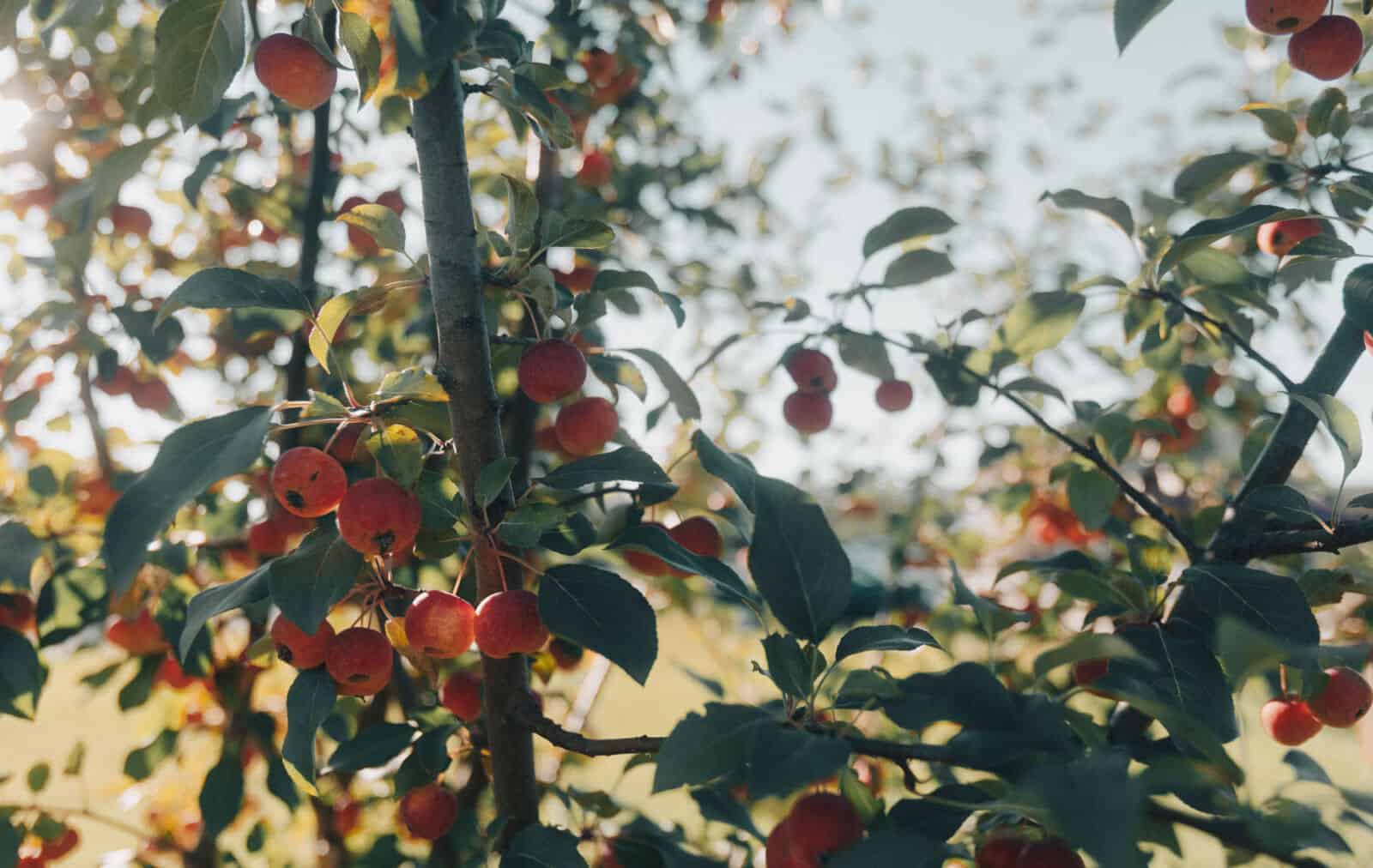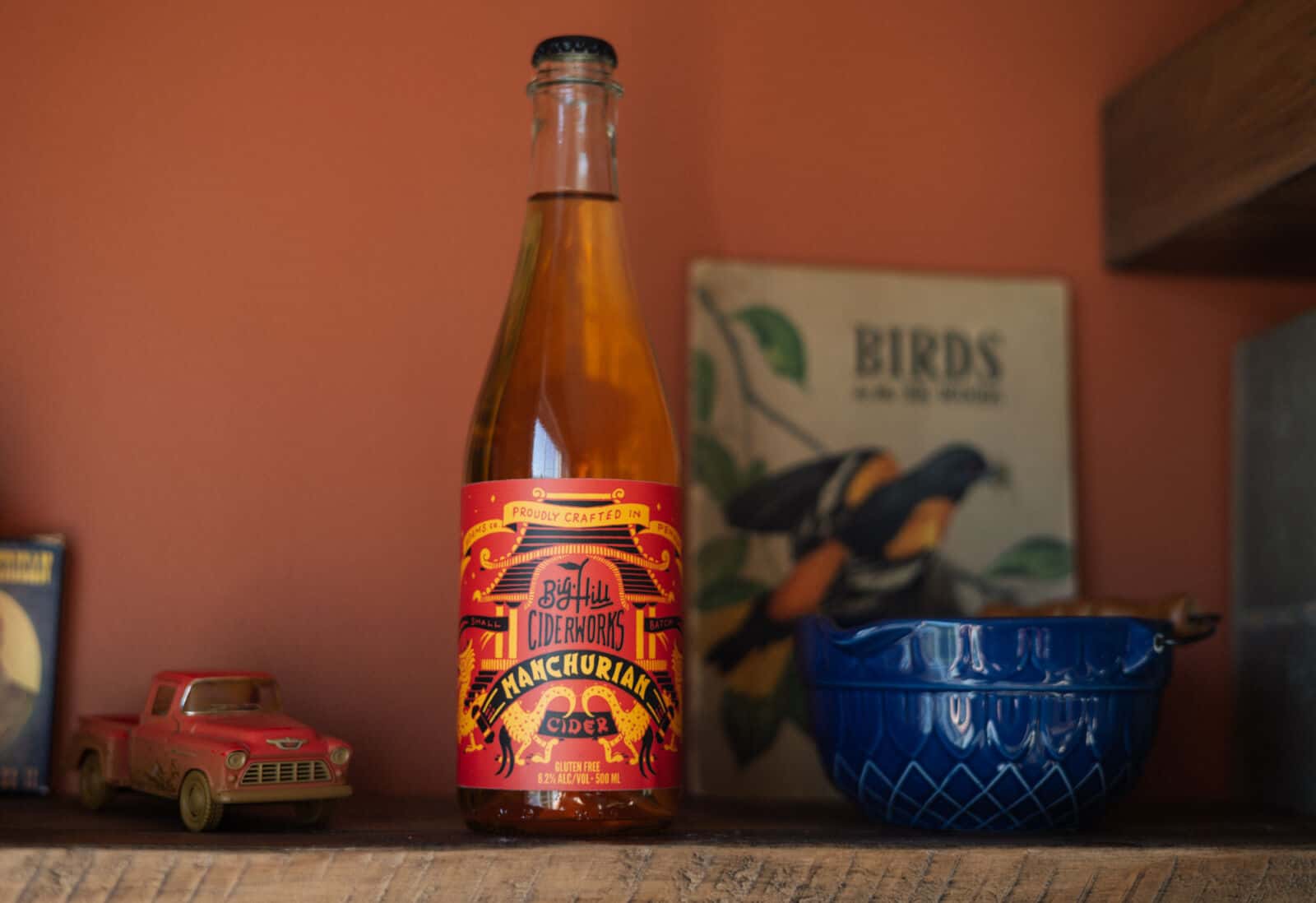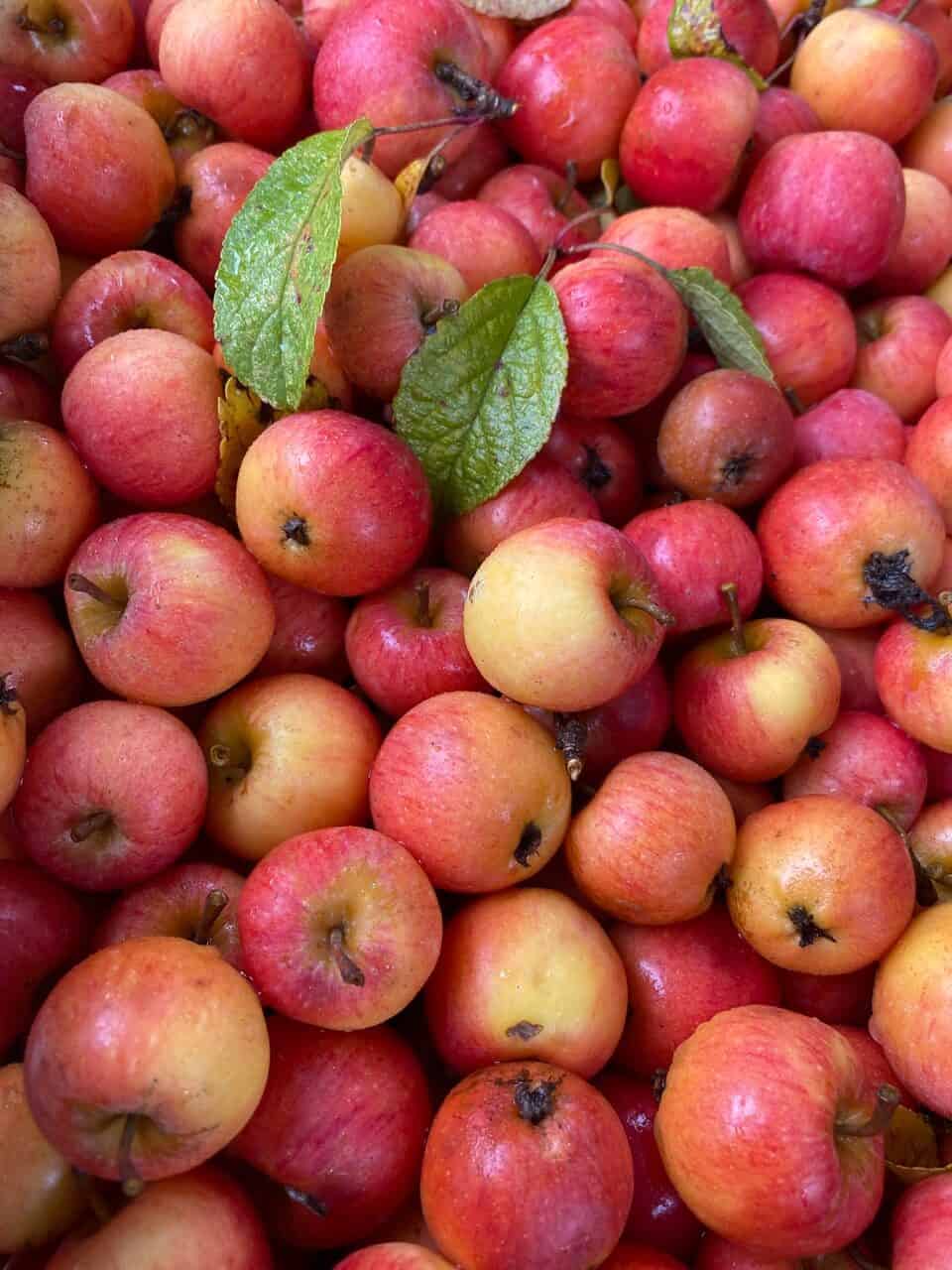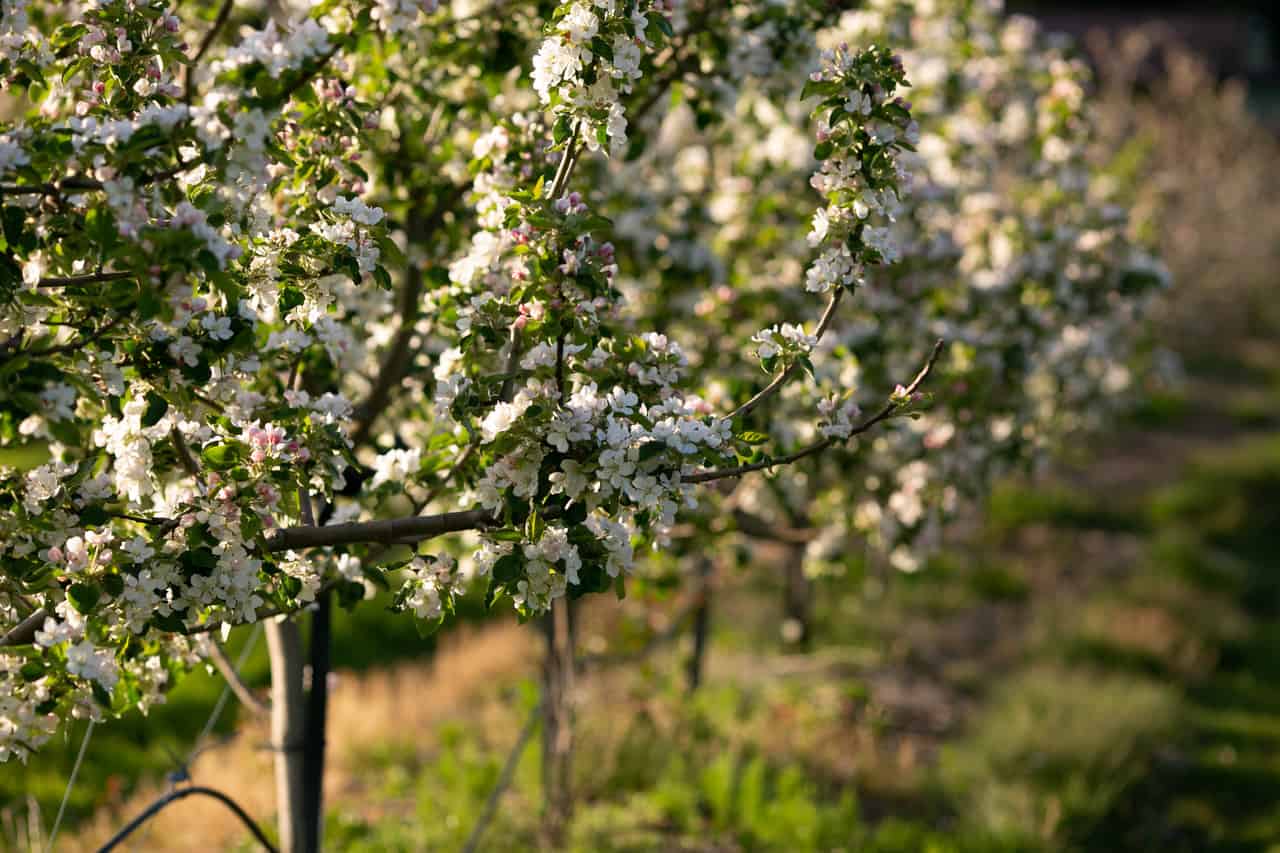Many of us probably share this experience: as a kid, walking around the woods or a little patch of farmland, coming across a gnarled old tree heavy with teeny tiny apples, and excitedly picking one to try. However, usually, that first bite is instantly spat out, as your tender young taste buds are flooded with an intensely unpleasant sourness or cotton-y mouthfeel. Crab apples, one quickly learns, do not make good snacks.
They do, however, make really good ciders. Crab apples (sometimes spelled “crabapples”) can be a hugely important element of a cidermaker’s tool kit. Why, though? The TL;DR of it all is that they provide potent little pops of acidity and tannin, the two flavor/texture elements can be tricky to develop in cider. Crab apples are, as we’ve learned, like glitter: A little goes a long way, but when you get it right, the “wow” factor is undeniable!
Some varieties that you might come across in hard cider include Wickson, Dolgo, Columbia, Hewe’s Crab, Chestnut Crab and Geneva Crab.
 Crab apples are small trees of the genus Malus, and are native to Asia and North America. What separates them from apple trees are the size of the fruits: technically, a crab apple tree grows fruits 2-inches or less in diameter, while a regular apple tree grows fruits 2-inches or larger in diameter. They’re not really farmed, and they are considered more of an ornamental tree, but are often used as rootstock to graft other apples onto.
Crab apples are small trees of the genus Malus, and are native to Asia and North America. What separates them from apple trees are the size of the fruits: technically, a crab apple tree grows fruits 2-inches or less in diameter, while a regular apple tree grows fruits 2-inches or larger in diameter. They’re not really farmed, and they are considered more of an ornamental tree, but are often used as rootstock to graft other apples onto.
Crabs were likely included in some of the first American ciders, largely because of their versatility. Troy Lehman, the owner of Big Hill Ciderworks, right smack in the heart of apple country in South Central Pennsylvania, notes that in the 19th and early 20th centuries, a crab apple tree was part of pretty much every farm.
“The actual reason the farmers planted them way back when was for jellies and jams, because the pectin content in that fruit is just so high,” he says. “Crab apple trees are also great pollinators because their blooms are so prolific.”
Lehman, who planted a cider apple orchard on his farm in 2011, he did not plant crab apple trees, despite knowing that they’d grow very well. It’s all about the process of harvesting — it can take 10 times as long to pick a bushel of crabs versus a bushel of culinary or cider apples.

“I didn’t want to grow them for commercial sales, for sales to other cider makers, because harvesting them is so labor-intensive,” he says. “If I’m being honest, it wouldn’t be worth my time to pick them for what I’d get paid.”
However, he does appreciate what crab apples can bring to the table in terms of making fantastic cider. All of the acidity and tannins that make crab apples so gnarly to eat out-of-hand make them a powerful balancing and brightening agent for ciders. For Lehman, though, their greatest strength is in the tannins.
He harvests Manchurian crab apples (“just an incredible little apple,” Lehman says) for Big Hill’s Manchurian Cider, and has since planted some Dolgo apples on his farm for a single-varietal Dolgo cider. Like the English bittersharp and bittersweet apples he grows, crab apples have unique flavor profiles and levels of acidity and tannin.

“For me, if a crab apple doesn’t have tannins that are off the charts, I’m not interested, because I can get acidity elsewhere in apples that are easier to harvest,” he explains.
Neither of the crab apple ciders that Big Hill produces are particularly big sellers, compared to their modern ciders, but Lehman sees a different value in continuing to make them.
“We only make the Manchurian cider every other year, 500 gallons at a time, and we sell it to people who are really into cider online and at farmer’s markets. Plus, stuff like crab apples ciders keeps me interested and having fun.”

Across the country, at Dragon’s Head Cider in Vashon, Washington, head cidermaker Jeren Stoneman makes one single varietal crab apple cider in the brand’s lineup of traditional English-style ciders: Columbia Crabapple. Some crabs are best for showcasing on their own, while others shine better as blending agents.
“The Columbia we make into a single varietal because it has very high acidity, which we can temper with certain yeast strains, and beautiful aromatics and a bright, tropical flavor that we want to showcase,” he says. “On the other hand, the Puget Spice crab apple that we grow has more aggressive tannins and higher acidity, and that one is more of a blender that I might use for a cider that’s lacking a little pizzazz.”
Stoneman echos Lehman’s statement that as a crop, crab apples can create some logistical issues.
“They’re such tiny apples, and are difficult to pick,” he says. “Also, on our belt press, there’s an elevator that goes up to a grinder and drops the apple mash into the press, but when you start working with smaller and smaller apples, you can lose some through grating or small holes in the machines, which is sad.”

One interesting thing about crab apples that Stoneman has noticed is how differently they grow and express flavors depending on the geography. He grew up in Humboldt County in Northern California, where the Wickson Crab was originally developed by plant breeder Albert Edder (locally the variety is referred to as Edder’s Champagne). When he moved to Vermont earlier in his cidermaking career, Stoneman noticed that the East Coast Wicksons were not what he was used to. In California, the longer growing season meant that the Wickson crabs developed a high sugar content and made aromatic ciders weighing in at 10-12% alcohol. In Vermont the shorter growing season meant Wickson ciders with much lower alcohol content.
“It seems like overall, the Wicksons didn’t like growing in Vermont, because they’d crack and sometimes you’d lose portions of the crop due to rot b/c of the wetness,” he says. “Back in Humboldt County, Wicksons love it there, the branches look like grape clusters. If you’re growing crabs in the region they like, they thrive and are resilient.”

If you’re looking for some crab apple ciders to try, here are a few to keep an eye out for: ANXO Cider Crabapple Ciderkin, Albemarle CiderWorks Virginia Hewes Crab, Haykin Family Cider Snowdrift Crabapple Cider, Liberty Ciderworks Wickson Crabapple, Ploughman Cider Rosedale, Farmstead Cider Bitter Local, Tandem Cider The Crabster and Wheel Line Cider The Leveler.
- First four photos: Big Hill Ciderworks
- Second two photos: Dragon's Head Cider